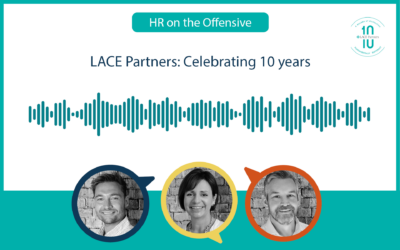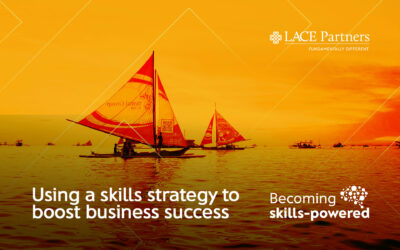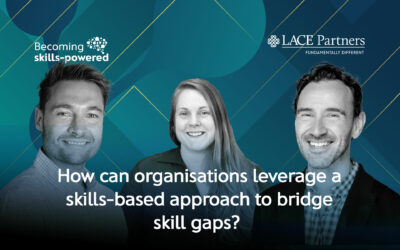It was great to have so many people attend the first of our Summer Series on buyer’s remorse in HR technology. The first webinar was on ‘What are the causes of Buyers’ remorse?‘, which is now available on-demand here or you can subscribe to the series here.
Joined by LACE founder Aaron Alburey, Marcus Beaver, the UK and Ireland Country Lead from Alight, and LACE Executive Director and award-winning business author Tim Ringo, we got to the root of buyer’s remorse around HR tech. Read our key takeaways below.
A familiar pattern in HR transformation is the trend for organisations to sometimes undergo massive HRIS implementations, using huge amounts of time and resources; and yet feel they are struggling to get the expected returns.
In the first of our series, we wanted to explore key themes around the causes of this disappointment, as it is rarely as simple as pointing a finger to the technology. We asked our experts the following questions:
- What are the most common reasons for buyer’s remorse?
- Do you need to move your HR system to the Cloud?
- What’s better – best of breed or integrated tech?
- What factors stop organisations getting ROI on their investment?
- What are the different ways that companies can get back on track?
What ROI are we looking for from our HR tech investment?
To contextualise, it’s important to understand what success looks like. Return on investment (ROI) is all about value – but beauty is in the eye of the beholder. Understanding your stakeholders and what they really value is key to success.
Our experts boiled it down to four key considerations:
- Improving people experience or the experience of HR Services
- Improving insights and decision making around people
- Driving cost saving
- Improving compliance and control
What are the top reasons people feel let down by their HR tech?
There are several roads to travel during an HR transformation that can divert you from achieving the ROI factors listed above and these can happen at any stage during your journey. Many of these may even occur before the implementation even begins!
Pre go-live:
- Plan, plan, plan: You need to spend time clearly defining requirements, desired employee experience (EX), integration details, governance, resource (project, vendor, SI, support) required, costs and value drivers
- Data and insights: There is no point buying a Ferrari but feeding it diesel. If you lift and shift poor data and processes into a new system, the insights will still be poor
- Change and adoption from day zero: Often overlooked, building a robust change management approach from day dot will do a huge amount to support the success of the programme
- Align your HR objectives to the business objectives: Build stakeholders from areas outside HR – e.g., IT, Payroll, Finance, business units.
During implementation:
- Don’t lose track of the end goal: Divergence from the original reason as to why you are doing the programme – and what during the life of the programme the purpose of the programme has become – can create confusion around what success looks like
- Keep inspiring champions: Lack of sponsorship and leadership throughout the HR technology programme can get in the way of business-wide support and tech adoption.
Post go-live:
- Outgrowing your vendor: Sometimes the system no longer meets the needs of your business due to organic or acquisition growth
- Training and support: Your change and learning support may need to continue for longer than expected for true adoption and to stop employees from reverting to legacy processes.
Do all businesses need to move to the Cloud
‘The question is not if, but when.’ – Tim Ringo
All organisations above a certain size will move to the Cloud at some point. As technologies advance there has been a shift in focus from compliance and process towards productivity and innovation.
If your current system is still delivering on its promises, now might not be the right time, but there will come a tipping point where your on-premise system will either become too costly to resource, too limited in functionality or it will simply be discontinued by the vendor.
At that point you will need to decide; how to get there, how fast you can do it and how much it’s going to cost.
What’s better? Best of breed or integrated technologies?
An ongoing industry discussion continues around whether organisations should opt for best of breed technologies which address areas (for example specialised ATS, learning etc.) or opt for the larger technologies which have modules for these built in, such as Workday, SAP SuccessFactors, Ceridian or Oracle.
From a cost and benefits perspective, Marcus highlighted the advantages of working with an integrated suite. Although you may get greater functionality from a best of breed, there are several underlying benefits to an integrated technology, including: data analytics, reporting, pre-existing dashboards etc. There are also additional expense, maintenance and integration considerations required for best of breed technologies.
That said, Tim explained that the integrated suites do have their shortfalls and some companies which have been using the newer cloud integrated suites for almost a decade are not fully happy with the functionality in all areas.
As such, many companies are now starting to add best of breed into their implementations. It’s inevitable some of the best of breed that are coming along for instance, in applicant tracking or recruitment or even succession planning are better than what you can get in the leading vendors. It depends on a blend of business requirements and existing landscape as to what you may need, but in many instances, it makes sense to bolt on best of breed tech like Degreed, Learn Amp, Beamery or other best practice platforms.
Key takeaways: Set your programme up for success
- Initial and ongoing governance – including leadership from HR, IT, Finance, vendor and SI. Establish governance bodies and processes that will run the length of the programme
- Ensure you get the right blend of people – those who know the business and those who are willing to drive positive change
- Create a robust case for change – which lays out the fundamental reason for the programme and expected outcomes
- Clarity first, action later– take time to collect and understand requirements, higher level objectives, and cost and benefit levers
- Outward thinking – create an inclusive program reaching out to all not just within HR – Working with other departments not just being insular. Work with IT, Finance, Payroll and business units to collect input and broaden ownership, engagement and support
- Invest in change management – it is the greatest predictor of success or failure and up to 70% of projects fail due to employee resistance and lack of sponsorship and leadership
- Pick the right vendor and system integrator – It’s important to take your time choosing the right vendor and implementation partner as they will be instrumental in the success of your project
- Build a strong coalition of support – with leadership across all departments – understand their expectations, their concerns, and gain consensus
- Real time action – dealing with conflict and issues as and when they happen
- Tracking benefits realisation – is there a specific role tracking this? Is it part of programme manager role? What is being achieved? How is it measured? What is the expected timing?
Those are only some of the key takeaways from the event. Watch it on-demand here to learn more about the causes of buyer’s remorse, as well as more detail on the topics we’ve covered. This is only the first in our four-part series so please join us for the series by subscribing here.
If you have questions about what you’ve read or would like to speak to the team about support on an HR tech programme, simply fill in your details below and we will come back to you soon.






